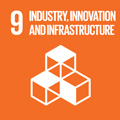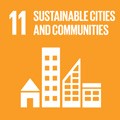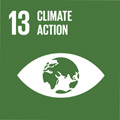- Docente: Vittorio Degli Esposti
- Credits: 6
- SSD: ING-INF/02
- Language: Italian
- Teaching Mode: In-person learning (entirely or partially)
- Campus: Cesena
- Corso: Second cycle degree programme (LM) in Electronics and Telecommunications Engineering for Energy (cod. 8770)
-
from Feb 20, 2025 to Jun 05, 2025
Learning outcomes
Basic knowledge of Geometrical Optics and Geometrical Theory of Diffraction. Knowledge of radio propagation phenomena in presence of concentrated and distributed dishomogeneities: tropospheric propagation, rural and urban propagation. Geometrical Theory of Propagation and Ray Tracing models. Empirical-statistical propagation models for different environments. The multipath mobile radio channel: Transfer Functions, power-spread profiles, dispersion parameters, time, frequency and space correlation and diversity techniques. Spread spectrum, OFDM ad multiple access schemes. Planning criteria for present and future mobile radio- and broadcasting-systems. At the end of the course the student is able to master the basic design of single- and multi-link radio communication systems in realistic environment. Moreover the student is able to solve simple deployment problems in multi-cell systems
Course contents
Introduction. Definition of "mobility" and classification of the different mobile radio systems. Long-range radio propagation through the atmosphere. Radio propagation in realistic environment. Geometrical Optics basics. The geometrical theory of propagation. Multipath propagation. Ray tracing models. Multidimensional propagation channel characterization. Basics of Antenna Arrays, MIMO and beamforming.
Radio coverage: attenuation and fading, field prediction models for rural and urban environment. Optimization of spectrum usage and spectral efficiency. Planning of cellular mobile radio systems in relation to the multiple access technique and other environment and system characteristicsReadings/Bibliography
H. L. Bertoni, Radio Propagation for Modern Wireless Systems, Prentice Hall, 2000
C. A. Balanis, Advanced Engineering Electromagnetics, Wiley, 1989
Teaching methods
The course includes lectures given by the professor, and exercises including a project done by the students.
Periodically, during the course some lessons are carried out interactively (or in flip-mode), presenting questions to which students must answer in relation to the program seen up to that momentAssessment methods
The exam consists of a written and an oral test. Written and oral tests are held on the same exam day. The final mark is the global evaluation of both written and oral tests, and is the average of the make of the two modules of the "integrated course". It is possible to vision and discuss the written test manuscript(s) only during the oral test. If written test average mark is insufficient (below 18 out of 30) the candidate must skip the oral exam and take the whole test again on a successive exam session.
The validity of the written test score is limited to the current exam session
The exams of the two modules must be taken within a maximum period of 1 academic year from each other.
Teaching tools
Blackboard, PC, overhead projector
Office hours
See the website of Vittorio Degli Esposti
SDGs



This teaching activity contributes to the achievement of the Sustainable Development Goals of the UN 2030 Agenda.
